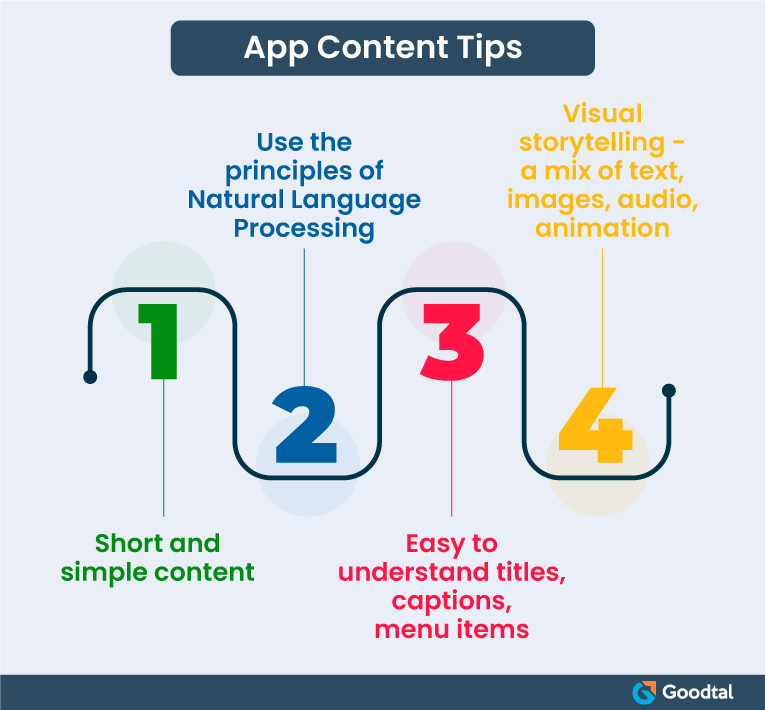
User-experience design is one of the most discussed topics in mobile app design. Yet, designing the best user experience is a challenge for many, and most apps fail in the market due to poor user experience.
All of us have read various statistics on the importance of good user experience design in the success of an app. It does not even require a debate, as most businesses agree that a great app results from an excellent user experience design. But, it is essential to understand how to create that perfect UX design for your app.
How to Perfect App UX Design
Here are some tips for designing the best user experience for your apps.

Responsiveness
Businesses are persistently thriving to increase their userbase. For your app to be successful, it must be used by many users. Various devices exist in the market to cater to these users with varied preferences. And based on changing priorities in the market, new devices are frequently launched.
Design for All
If your app performs well on one device but fails on the other, you are not just losing a complete set of users who use that device but also lose trust in your business. However, businesses can’t design user experiences separately for so many different devices. It will be very costly. And so, the solution is to design responsive apps that behave well on all devices and offer a great user experience on all.
Use Latest Tools and Technology
With the increasing support of technology, it is not very challenging to design for all devices. The most common technologies that have over the years proved themselves in building responsive app designs are HTML, CSS, and JavaScript. Various tools also support designing responsive user experiences.
To conclude, developing responsive apps is the most prominent user experience design tip, so don’t miss it.
User-Centricity
There are various ways to look at your app project. But the best way is from the perspective of your users. User-centric apps go a long way and achieve high ratings and the best reviews from users.
Let’s read further to know how exactly businesses make their apps user-centric.
Simple Navigation
Most app users prefer apps that are simple to navigate. They don’t waste time on apps that require seeking help every step. So keep the navigation simple to ensure that the customer can access the required features in the least possible steps or clicks.
Fonts & Spacing
The appearance of the app is an important element of user experience design. The look and feel of the app should be uniform across the different sections and pages. For this, most successful apps maintain a theme throughout the application.
When it comes to colors, keeping it simple is the key. The light background and contrast element colors are trending as these are soothing to the eyes. Also, users generally prefer light backgrounds and contrast text and element colors that are clearly visible.
Following a theme also gives the feel of the app everywhere the user is navigating. The theme also means that the app focuses on a set of colors everywhere and generally doesn't drift from that. Also, uniform formats across pages and sections ensure that the user does not get confused or distracted while using the app.
Accessibility
Clear and simple layouts are comfortable for most app users, irrespective of age, education level, and difference in abilities. The right mix of audio and visual elements generally does the trick to make the app friendly to people with different abilities.
The app content should be legible and in a language that the users can understand. Multi-lingual apps are the trend now, but the language should also be simple.
Visibility
Images are a significant part of the app’s user experience as they catch user attention and increase user engagement. Note that a successful app need not have random and excessive graphics that occupy most of the screen. Instead, the app should have minimum and only relevant images and graphics to avoid distracting the user and convey the information as accurately as possible.
Content
“Content precedes design. Design in the absence of content is not design, it’s decoration.” - Jeffrey Zeldman
Have you ever seen an app without any content? Logically, an app is useless without content. While all apps have a lot of content, a good user experience design means knowing what content is right for your app and what can be excluded.
Content can make or mar the user's comfort while using the app. Remember, an app is not a blog. Long-form content is a strict no for an app. Precise, relevant, and accurate content makes the user understand the sections, navigation, and features easily. Poor-quality, unnecessary, and lengthy content distracts and bores the user.
For a good user experience, the content on the app must be the right mix of text, elements, graphics, audio, and video. Visual storytelling is a trending way of creating a mix of usefulness and creativity of content.
Visual Storytelling
The principle behind storytelling is, “show, don’t tell!.”
Visual storytelling is the best way to grab the user's attention and convey everything simplistically to the user. Visual storytelling makes the user’s app journey smooth. It is a fact that information in the form of visuals is absorbed and interpreted better by users. Visual storytelling uses media, such as images, videos, animation, graphics, infographics, voice, music, and audio, to convey a concept or process. Thus visual stories drive emotions, and they are an engaging way to communicate with the user.

Personalization
Personalization of user experience makes the user feel valued. Every app user matters to the business, but the user should know that he does. Personalization is a way to make your experience individualistic for each user. Let’s see how businesses achieve personalization in apps.
Big Data & Analytics
Apps are a source of valuable data that businesses can use for further analysis and personalization. User data is generated by tracking user behavior such as searches, sections they view the most, wishlists, location, past purchases, etc. Apps collect huge volumes of data, but not all are useful for businesses. With the help of data analytics, this data is filtered for relevance and processed to create a user profile that is used for offering personalized interactions.
Support
Your perception of your app may not be the same as users’ perception of it. And due to this gap, many apps fail. Bridging the gap between the user’s expectations and user experience delivery is simple when a user shares his experience proactively and regularly. But, that is too much to expect from a busy user. So, there have to be better ways of offering support to the user.
Track User’s Interactions
To provide the best user experience, businesses must track the user’s interactions and try to find the bottlenecks that the app is posing during his interaction. If there are such bottlenecks, there has to be a way of offering support to the user through in-app alerts or push notifications. Also, many successful businesses use phone calls or email to offer such support.
In-app & Push Notifications
In-app notifications make it easier for a user stuck somewhere during app interaction to get the desired help without searching for it. Using push notifications wisely is the trick to offering real-time support.
Collect Feedback
At times, users just abandon the app when they are stuck somewhere and cannot find a way while using the app. Some of them uninstall the app after such experiences. To make sure that the user gets what he wants, it is advisable to collect feedback from the user.
This feedback must include ratings, reviews, and comprehensive parameterized opinions about different elements of the app. Remember, seeking feedback might be easy, but getting one is not! So, businesses must work out different ways and channels for gathering feedback, including in-app chats, social media, email, messengers, and calls.
However, make sure that the feedback is sought at the time of users’ convenience. Different times and channels should then be tried if the request doesn’t lead to an outcome. Remember, there is no best time for sending feedback requests to all the users through mail or message. Businesses must work out the right time for each user based on user interactions. Also, businesses must take due care to prevent annoying the customer who is not comfortable sharing the feedback. The feedback requests and the frequency of such requests must be optimized for the best results.
Design Thinking Approach
Designing the perfect user experience requires research, planning, and the right approach. The right strategy and approach incorporate the best practices in design to produce the desired outcomes.
Responsibility
The Design Thinking approach recognizes the importance of responsibility at all levels of design and development. Thus, the outcome is free from errors and performs as desired.
The design thinking approach has made it easier for app designers and developers to deliver a successful user-centric, high-quality application offering an amazing user experience. Designers and developers are now accustomed to this creative and quality-oriented approach that has paved the way to their success. Read here for the details on the role of design thinking in the best UX design.
What to Avoid!
A lot has been discussed on what to do to deliver the best user experience. But, design mistakes can be very costly for app and website designers. Ignorance, or at times following outdated practices blindly, can lead to user experience design blunders. So, it is important to understand what not to do!. Keep yourself updated on the most common yet disastrous UX design mistakes to prevent repeating the same.
Wrapping Up!
It is important to be aware of how it can go wrong to do the right. This applies to user experience design as well. This blog suggests simple tips on delivering a great user experience. Yet, the best user experience design results from practice and experience. So, it is recommended that businesses go for the top mobile app developers who design and develop their apps incorporating their learning and expertise into your app.
